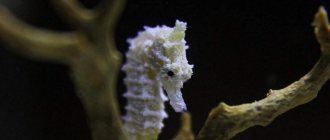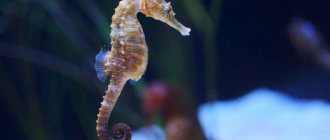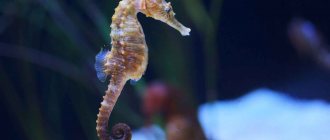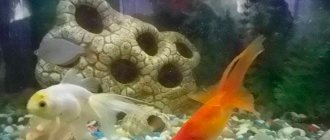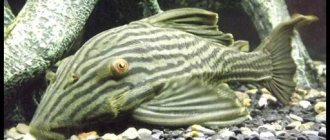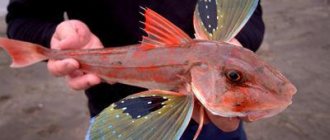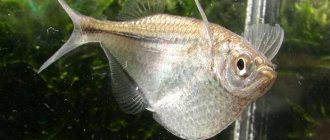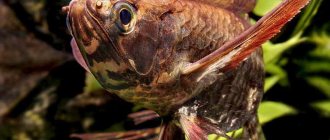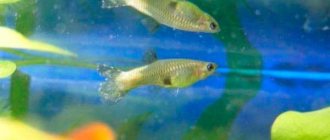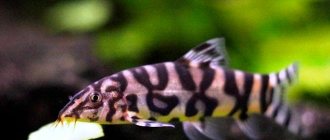Description
The seahorse or Hippocampus is a small ray-finned fish of the pipefish family. Translated from Greek, “hippo” means “horse” and “kampos” means “sea monster”. And in appearance it looks like a knight chess piece.
@Nennieinszweidrei -pixabay.com
This is one of the oldest species of fish, their age is about forty million years. Despite the fact that the skate is a fish, it does not have scales, instead of which a hard bony shell performs protective functions. It is so strong that only a land crab can handle it.
In many species, the shell is protected by a variety of spines, and in some it is also covered with elongated multi-colored processes similar to ribbons, thanks to which the seahorse merges with the algae and becomes invisible to predators.
The sizes of these fish are modest - 10-12 cm. The largest individuals grow up to 30 cm, but this is an exception. There are also very tiny ones - from 3 to 12 mm.
Like its earthly counterpart, the underwater horse has an elongated muzzle, but its eyes are pronounced and large.
The seahorse, like the chameleon, has each eye moving separately from the other, and it can rotate each eye separately in a circle.
@ RicardoParra - pixabay.com
There is another similarity with a chameleon - the ability to change its color. Depending on the situation and the surrounding area, the seahorse adjusts the color of its shell to the color of corals or algae, becoming practically invisible, which allows it to avoid numerous enemies.
Diseases
The list of diseases of aquarium fish is huge; experienced aquarists and people with special education understand them. If you lack experience, it is better to consult a doctor.
Fin rot
The disease appears in dirty water when the fins are injured. If you ignore the disease, after the destruction of the fins, damage to the body will begin and the fish will die. Fin rot is treated:
- Salt baths. Immerse the sick individual in a solution of table salt (3 tablespoons per 5 liters of water) for 10–15 minutes. Treat the decorations and soil.
- Levomycetin. Dissolve 1 tablet for every 20 liters of water. Once every three days, add a solution in an amount of up to 30% of the aquarium volume. Carry out treatment until complete recovery.
Where does it live?
Seahorses are heat-loving creatures that require warm water with a stable temperature for a comfortable existence, therefore they live mainly in tropical and subtropical seas.
They can most often be found off the coast of Australia, the Philippine Islands, Malaysia and Thailand. There are several species that are found in the Azov and Black Seas.
The majority of seahorses prefer shallow water. Since these fish are sedentary, they are more comfortable near coral reefs and algae, where they can camouflage and hide. They attach their tails to plant stems or corals and “merge” with them.
@katja — pixabay.com
Plistophorosis in guppies
There are many diseases that can affect this breed. Plystophorosis is considered one of the most dangerous. The disease appears suddenly and inevitably leads to death.
Often with this disease, the guppy swims with its tail down. Other signs of infection may include:
- spasmodic method of movement of fish;
- attempts to take a vertical position;
- loss of appetite and exhaustion;
- faded body color;
- retracted stomach
Fish with plistophorosis experience decreased appetite and exhaustion.
If guppies begin to swim upside down, it can be assumed with a high degree of probability that they are developing this particular disease.
Plistophorosis is quite rare. Healthy individuals become infected with it as a result of ingesting parasite spores. Water, soil or aquatic vegetation from an infected reservoir contain them in huge quantities. Poorly treated fishing equipment and equipment are also dangerous. The causative agent of the disease is able to penetrate the female’s ovaries and eggs. Thus, the disease has a hereditary transmission mechanism.
Unfortunately, there is still no treatment available. The only effective way to combat infection is to destroy all pets and vegetation in the aquarium. The aquarium itself, the soil and the corresponding equipment must be thoroughly treated by boiling or calcination.
The diagnosis of plistophorosis can only be confirmed by a qualified specialist after carrying out all the necessary stages of laboratory research.
Why does it float vertically?
Seahorses have one feature that fundamentally distinguishes them from other fish - they swim vertically. And this is due to the structure of their body.
Unlike other fish, which typically have 6 fins, seahorses have only three: a small fan-shaped dorsal fin and two small pectoral fins. The dorsal one helps to move forward, and the abdominal ones help maintain vertical balance.
And the skates are constantly in an upright position thanks to the swim bladder, divided into two parts, and the volume of the upper head part is noticeably larger than the lower abdominal part. It hangs in the water like a float - a large light bubble at the top and a heavy tail at the bottom.
@ arhnue - pixabay.com
Seahorses rarely travel long distances, but if such a need arises, they cling with their tail to the fins of other fish and thus move to the place they need.
Seahorses are represented by a large number of species, more than 50, differing in size, appearance and some structural features. Moreover, 30 of them are already listed in the Red Book. This is due to the massive catching of these exotic fish for making souvenirs and for gourmets. In many countries, the meat of this fish is considered a delicacy; the cost of the dish reaches up to $800 per serving.
Tips for fish lovers
The development of many diseases can be avoided if you purchase fish and aquarium components from reliable pet stores. In order to prevent the penetration of parasites into the home pond, new fish should be kept in quarantine for some time . At the same time, you must remember to allocate separate nets and equipment for them.
Under properly organized conditions, guppies rarely get sick. Improved care and compliance with the basic rules for maintaining aquarium inhabitants will be the best prevention of all diseases.
Causes of diseases, their photos with descriptions, as well as treatment of aquarium fish
All fish diseases occur due to poor care or viruses and parasites entering the aquarium.
To get rid of a specific disease, it is necessary to establish an optimal environment for the fish or use certain medications.
Swims sideways or rolls over on its side
Sometimes aquarists notice that one of the fish cannot stay in one position for a long time: it seems to fall on its side on its own. During swimming, strange deviations are also observed; Ternetia can swim sideways or make unnatural movements.
If there are no other symptoms or visible damage, then most likely we are talking about oodinosis - an unpleasant parasitic disease. It is recommended to treat all aquarium inhabitants with bicillin: its dosage ranges from 750,000 to 1,500,000 units per 100 liters of water. After about a day, the parasites will die, but after 3-5 days it is worth repeating the treatment , and only then see if the symptoms disappear.
To prevent the disease, you need to be especially careful about the sanitary treatment of plants, soil and shelters.
New fish should first be placed in a quarantine tank to eliminate the possibility of infection.
In some cases, Ternetia falls on its side when contracting tuberculosis. As a rule, it is useless to treat affected individuals; they should be immediately removed from the aquarium.
Growth on the lip
If a black dot appears on Ternetia’s jaw, which soon turns into a noticeable bump, then this may be a sign of various diseases. If the fish behaves as usual and does not lose appetite or mobility, then the growth is most likely a tumor, which is best left untouched. If desired, the growth can be cut off and cauterized with betadine, but doing this at home is problematic.
If black dots begin to appear all over the body, then Ternetia is affected by a fungus (this is often how ichthyosporidiosis manifests itself). The diseased individual should be placed in a separate container and treated with fungicides, for example, parachlorophenoxytol. Its dosage is about 1 gram per 1 liter, and the medicinal solution must be added to the water at the rate of 40 ml per 1 liter of aquarium. The solution is added several times over 3 days, after which all the water is replaced and the condition of the fish is monitored.
A preventive measure, as in the previous case, is the treatment of all foreign objects in order to prevent infection from entering the aquarium.
Growth on the head
Growths in Ternetia can appear not only on the lips, but also on the head, sometimes they affect the change in the shape of the fish as a whole.
A growth on the head of a veil thorn.
If the individual behaves normally, eats well and swims actively, then the reason may be a banal overpopulation of the aquarium: there should be at least 10 liters per fish. In this case, it is worth unloading the container, or providing more thorough care.
If Ternetias are kept in good conditions, then the growth is most likely of fungal origin. In this case, the fish must be quarantined and treated with special baths. Add 1 tsp to 1 liter of settled water. soda and 2 drops of iodine, after which the fish are put in there for a couple of hours. This procedure is recommended to be carried out every other day for a week, after which Ternetia, as a rule, recovers and can be kept in a common aquarium.
What to do with other diseases
Ichthyophonosis leads to the formation of dropsy. There is no cure for this disease; it can only be controlled slightly with nystatin.
The causes of inflammation of the swim bladder can be different: damage by parasites, viruses or bacteria. To effectively combat parasites, there are special preparations. There are many of them, the choice depends on the specific pathogen. Viral infections can be treated with chloramphenicol or rimantadine. Antibiotics help fight bacterial infections.
It is worth saying that problems with the bubble also arise due to mechanical or physical effects. The disorder of this organ is a good reason for impaired swimming functions.
In goldfish and related species of fish, the condition of the intestine is interconnected with the swim bladder: at times, problems with it arise when it is compressed by the intestine, stretched due to excessive swelling of dry food or overeating.
Reproduction problems
Some aquarists breed their own fish to enrich the artificial reservoir with colorful inhabitants. But this is sometimes hindered by certain problems.
Female guppies may suffer from infertility, which may be a congenital condition or a consequence of bright and long-lasting lighting in the tank. The second reason is easier to deal with. Infertility in a female is determined by the intensity of her color, which has decreased due to improper conditions. You can restore the brightness of the colors if you reduce the daylight hours for the fish to 11-12 hours and reduce the power of the lamps.
Female guppies may be infertile
Some individuals exhibit hermaphrodism. It is difficult to diagnose externally. The disorder is characterized by the fact that the female develops male genital organs, while the fish can self-fertilize. Males born as hermaphrodites are sterile.
